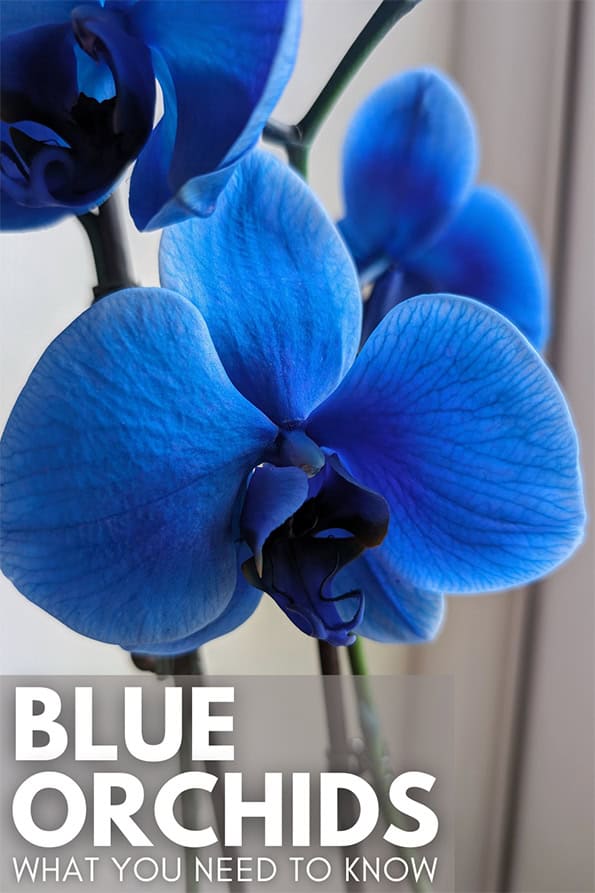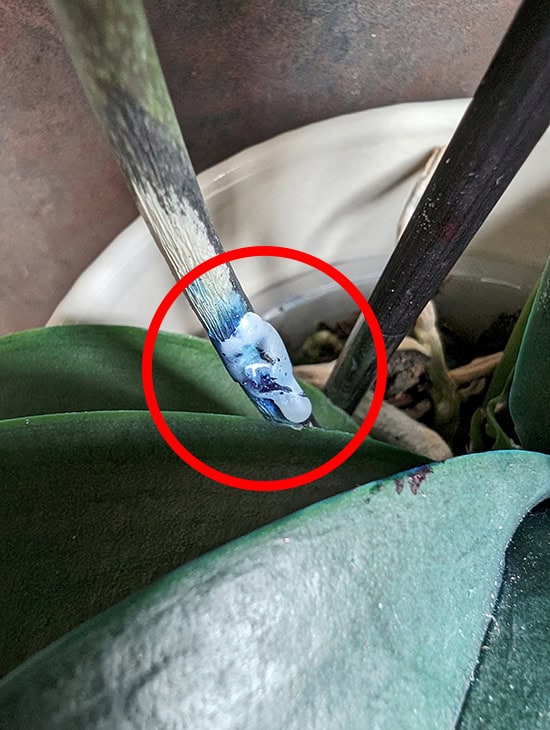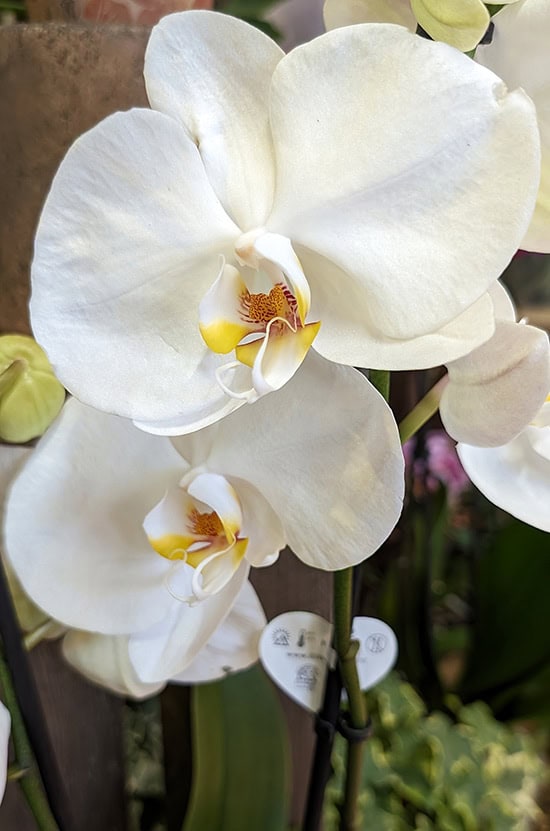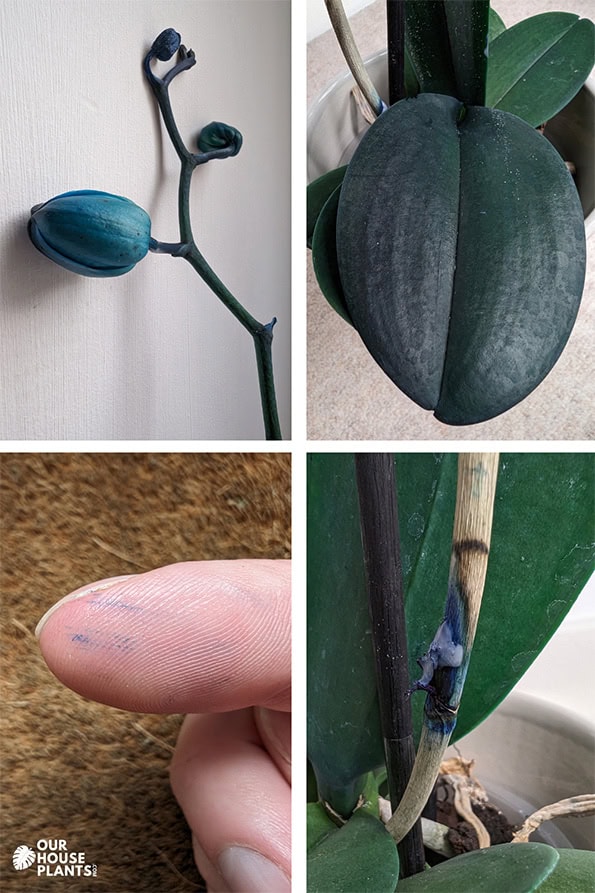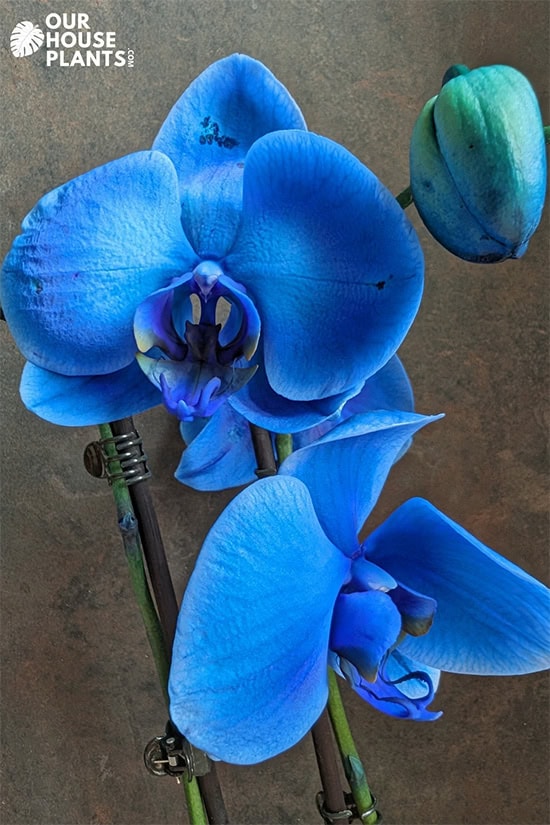Blue Moth Orchids (Phalaenopsis) are eye-catching houseplants sometimes seen in big box stores and garden centers.
But, blue flowering plants, whether indoor or outdoor ones, are rare, and blue orchids are even rarer. So finding one for sale in such an everyday place while doing your weekly shop at a relatively reasonable price, can quickly raise more questions than answers.
Both novices and experienced plant owners can be confused and surprised by the Phalaenopsis Blue Orchid.
In this article, I'll explain what's what, answer your questions and tell you how to grow and keep your blue Phalaenopsis Orchid looking its best.
True blue orchids are super rare in nature. The only ones you'll realistically see with your own eyes are the Vanda coerulea Orchid or the Blue Lady Orchid ( scientific name - Thelymitra crinita).
Even then, this will probably be in a Botanical garden or exhibition rather than a shop or grocery store. (If you've seen blue vanda orchids or another blue flowering orchid species somewhere this mundane, I'm waiting to hear from you in the comments!)
So most Blue Orchids you'll encounter are actually the common Moth Orchid (Phalaenopsis) with a little twist. Here's the kicker: it's not real. Well, the plant is perfectly alive and very much real, but the coloring you can see is man made and unnatural.
The truth here is that most blue orchids available in stores are actually white orchids dyed blue. This process involves injecting blue dye or ink into the flower spike, creating the vivid blue flowers that attract so much attention.
After the flowering stem is injected with dye, the small hole that's created is coated in a layer of wax to keep the dye in the stem. That's the theory anyway, as you can see some has still leaked out over time.
Injected dye isn't always used and sometimes the grower will use food coloring. It's similar to what most of us will have done as kids just with other types of plants. Food coloring is less often used though as the blue is usually less vivid and takes longer for the grower to achieve.
Moth Orchids are regular repeat flowering plants and with reasonable care they can be brought back into bloom within 9 months, sometimes sooner if you're lucky.
However what's making them blue in the first place is the dye in the flowering stem. When the new flowering stem starts, the dye is missing, and so when the buds eventually open the blue won't be there.
So while these dyed orchids are stunning when brought, their new blooms will always revert to their original color, which in 95% of cases will be white.
The next time a blue orchid reblooms, the blooms will revert back to their natural color. Often this will be their original color of bright white, pale yellow or light pink.
The white flowers are a bland natural color that can easily be dyed with a blue pigment or food coloring to create bold and exciting colors. Blue is often picked as it's one of the few colors Moth Orchids don't come in naturally.

Hi, I'm Tom!
If you're like me and enjoy the challenge of growing houseplants and getting them to thrive, then Ourhouseplants can help. This website shares my knowledge and years of growing plants and provides (hopefully) helpful advice on properly caring for your indoor plant friends.
You might be interested in buying one or perhaps have been gifted one and want to learn as much as possible. As a plant lover I've been gifted a fair few over the years, so here are a few things worth mentioning about these plants.
Four common issues that happen to Blue Orchids. From Top left clockwise. Premature leaf drop / Leaf color changes / Dye transfer / Premature flowering stem aging.
Unlike a regular Phalaenopsis, these specialist plants will often come with several issues, that include damage around the injection site on the flowering spikes, a blue tint on the green leaves, and leaking blue pigment. New flowers will also be white, although they'll last longer than the original blue ones.
Growing any Moth Orchid, including the blue ones, can be a rewarding experience. Even if the future flowers won't be blue you can still have a beautiful plant for many years providing you give it proper care.
Moth orchids can cope with medium light levels, but do best and will produce more flowers in bright, indirect light. Avoid direct sunlight, as it can scorch the leaves. A north or east-facing window with their more gentle natural light is ideal.
Some people use ice cubes to water their Orchids. Although this can work for some it's too fiddly for others. In any case the general rule is to water your orchid when the potting mix has dried out. Good drainage is a must and chunky materials like bark is needed to achieve this.
I have a full and extensive guide with photos to show you when you should water. I've also built a quick quiz to give you a rough idea how often you should be watering based on your growing conditions.
They like warm temperatures during the day and slightly cooler at night. Try to maintain a temperature range of 65-75°F (18-24°C) during the day and a little down from this at night.
Moth orchids prefer higher humidity levels, around 50-70% which is similar to their natural habitat. You could get away with less, but very low levels can prevent future flowering and lower the life of the flowers.
Feed your orchid with a balanced orchid fertilizer on a regular basis every 2-4 weeks during the growing season (Spring and Summer). You can also use a normal houseplant balanced fertilizer, but dilute the fertilizer to half the recommended strength to avoid over-fertilizing.
Good airflow is essential to prevent fungal diseases. Place your orchid in a well-ventilated area, and avoid overcrowding with other plants.
Sometimes you can encourage normal orchids to to rebloom quickly with a few tricks, however with Blue orchids you ideally want to remove the dye from the plant by cutting off the stem. Additionally, its worth saying again that most of the flowering stems won't rebloom if harsh dye has been used.
So after flowering, I recommend removing the flower spike as close as possible to the base of the plant. I have a full guide including pictures showing how to do this here.
Some Orchid Lovers will adore the look of these plants. Others will just think of them as sporting a bad dye job. What do you think about them?
Other than the future reblooming process they won't need any other special care. All other growing requirements of your Phalaenopsis Orchid are the same as a plant that's not been dyed. If you want to learn more or need further information you can check out my extensive guide for growing Moth Orchids.
